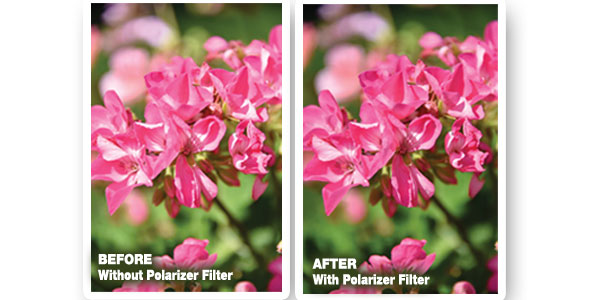 |
 Larry Kelly has been taking photos for many years. He refined his skills as an amateur photographer and went digital in 2006. A retired environmental law enforcement officer, he enjoys photography, writing, and coaching others. He can be contacted at lwkelly113@gmail.com. |
| It’s a beautiful summer day as I write this, but the nights are a little cooler and the katydids are in full song. Beautiful fall is just around the corner. If you like taking pictures of the wonderful fall foliage, a circular polarizing filter can help you get better fall photos. Simply put, this lens works by blocking some of the scattered light reflecting off your subject. It kind of cleans up the “noise” in the light entering the lens allowing for a clearer image to be recorded. Colors will become darker and richer. Reflections and glare will be reduced and colors will be more saturated. Like wearing a pair of polarizing sunglasses, you will also be able to see better below the surface of water with this filter attached. The circular polarizer lens’ full effect is realized when your subject is 90 degrees to the sun. In other words, if you are facing your subject, the full effect of the polarizer lens will be had when the sun is over your right arm, or your left arm. If you are shooting directly into, or directly away from the sun (i.e. 180 degrees), the effect of the lens is less. Also, the polarizer is most effective during the mid-morning and mid-afternoon hours, least effective during sunrise and sunset, and at high noon. But don’t let that stop you from using it during those times. The circular polarizer is adjustable by turning a ring on the outside of the filter. You can vary the effect from just a touch to getting the maximum effect, depending on how the scene looks in front of you. Get a thin-mount filter to reduce the chance that the filter will show up in the image, especially when using a wide-angle lens. Get the best filter you can afford. You don’t have to go crazy, but don’t put a cheap $30 filter on your lens that costs hundreds of dollars. Since the leaves haven’t changed yet, I took two unedited photos of colorful flowers to show the “before” (without polarizer filter) and “after” (with filter) to give you an idea of the effect. And if you only have your cell phone with you, try putting your polarizing sunglasses in front of the lens and take a picture of that awesome tree. Don’t laugh, try it! |
|












 20 lucky winners will win $500 each in prizes totaling $10,000.
20 lucky winners will win $500 each in prizes totaling $10,000. 